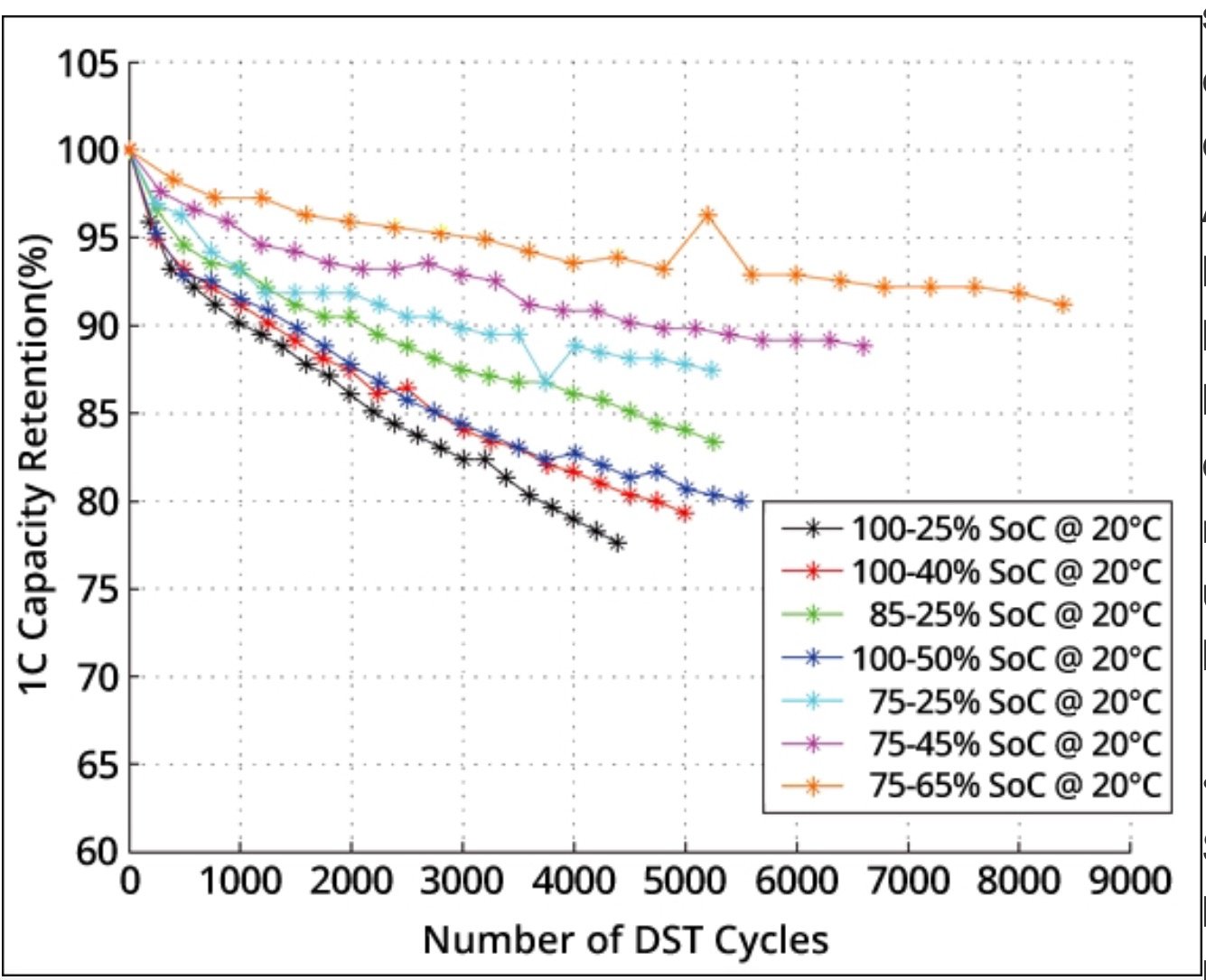I see that graph repeated here a bit. I think it is important to note that it represents 2 factors that aren't applicable to Tesla battery health. If you read the original study at the link provided:
(PDF) Modeling of Lithium-Ion Battery Degradation for Cell Life Assessment. Available from: https://www.researchgate.net/public..._Battery_Degradation_for_Cell_Life_Assessment
The legend in both figures indicates the starting and ending SoC percentage for each test curve and the test room temperature.
First, the "@ 20C" in the legend refers to a room temperature of 20C with no control on the temperature of the cells themselves. Tesla batteries are temperature controlled so the temps of the actual cells are more tightly controlled than a bare cell in a 20C room being charged at a constant rate of 1C.
For each test, the cell first starts at a set SoC level and the DST profile is applied repetitively until the set stop level is reached. The cell is then recharged back to the starting level at a 1 C-rate to finish one test cycle.
Second, the profile used specifies a charge rate of 1C which is very damaging at the top end of the battery charge cycle. Every 100% test there has seen battery abuse that no Li-Ion product has been subjected to in the past decade or so as manufacturers have taken this kind of research into account and adopted charging profiles on even the simplest consumer electronic chargers. While many chargers are meeting or exceeding 1C charge rates at their peak, none of them use a 1C charge rate as the battery approaches 100% SoC.



